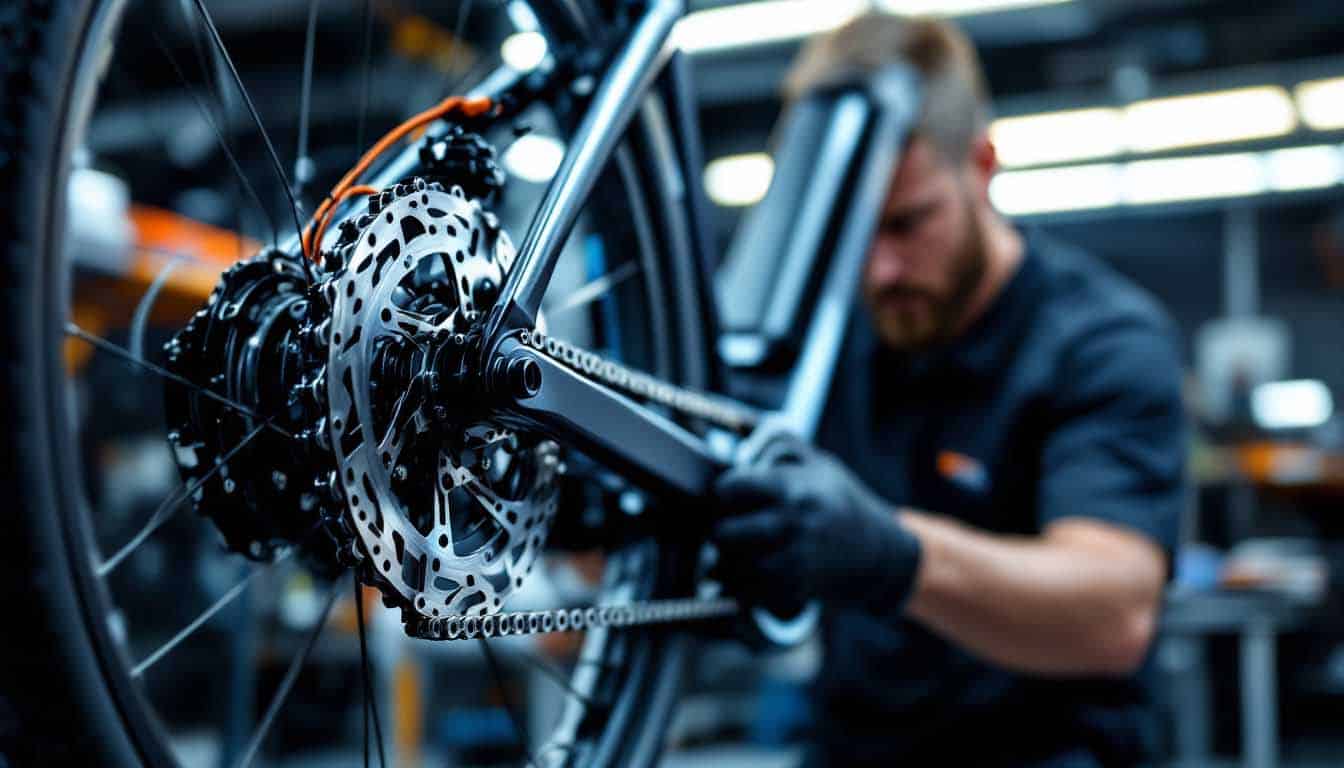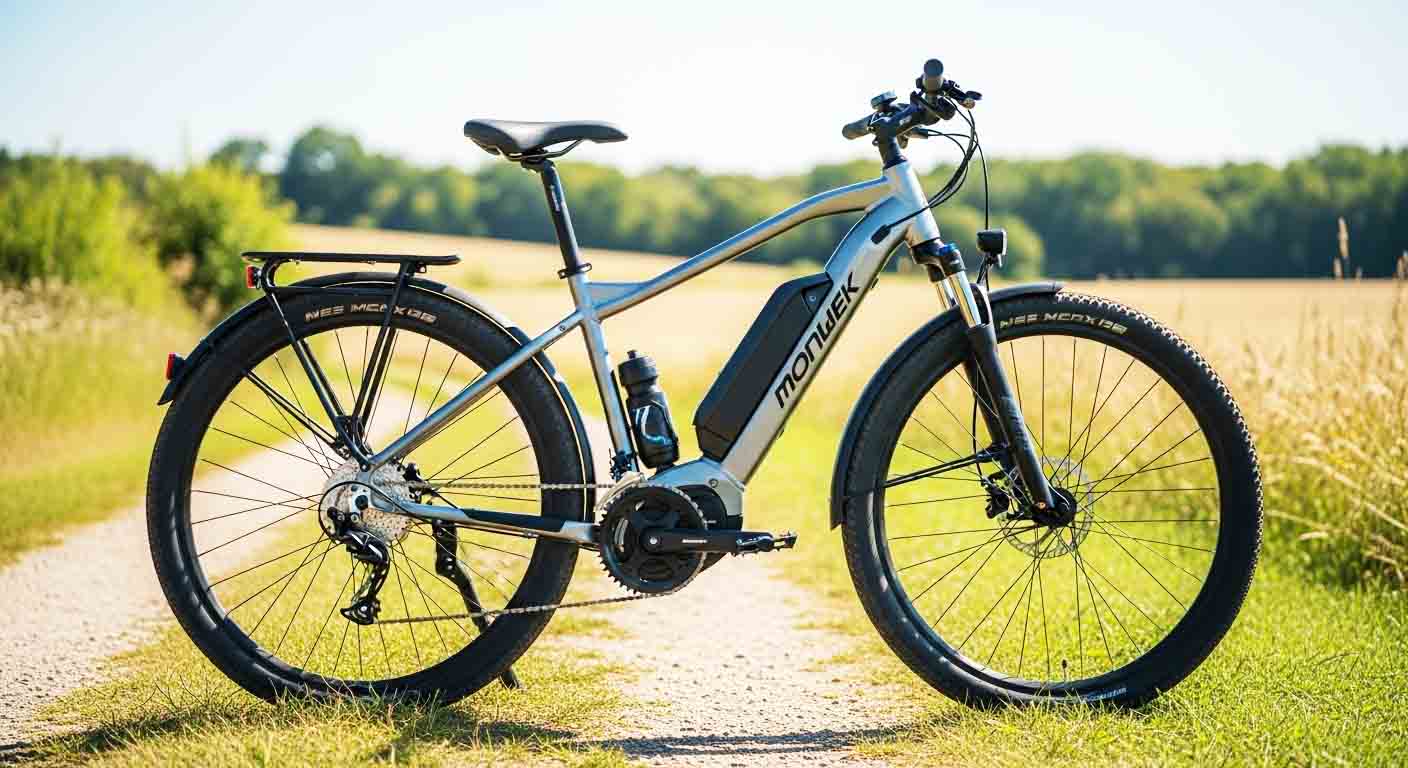Listen Up! A Simple Guide to Diagnosing and Fixing Weird E-Bike Noises
Listen Up! A Simple Guide to Diagnosing and Fixing Weird E-Bike Noises
That feeling is the worst. You’re enjoying a perfect ride—the wind in your hair, the smooth assist of the motor—when suddenly… click… creak… grind.
Your e-bike is making a weird noise.
Your heart sinks a little. Is it serious? Is it going to be expensive? Will my bike break down miles from home? That serene joy of riding can turn into anxiety in an instant.
But take a deep breath. You’re not alone, and most of these noises have a simple, fixable cause. Think of this guide as your friendly mechanic, here to help you play detective. By the end of this article, you’ll be able to diagnose those mysterious sounds and get back to silent, happy riding in no time.
Safety First! If you’re ever unsure about a repair, or if the noise is coming from inside the motor or battery, always consult a professional mechanic. Your safety is worth it.
🔧The Detective’s Toolkit: What You’ll Need
Before we start, gather a few simple tools:
-
Your ears: Pinpoint where the sound is coming from.
-
A clean rag: For wiping and handling parts.
-
Allen key set: The Swiss Army knife of bike repair.
-
Bike-specific lubricant: NOT WD-40 (which is a degreaser). Use a proper chain lube.
-
A floor pump: with a pressure gauge.
-
Carbon assembly paste (if you have a carbon frame): prevents creaks by adding grip.
🔊Case File 1: The Clicking & Ticking Culprits
The Sound: A rhythmic, repetitive click or tick that often syncs with your pedaling or wheel rotation.
Suspect A: The DriveTrain (Chain, Derailleur, Cassette)
This is the most common source of clicks.
-
Diagnosis: Does it click once per pedal revolution? Or once per wheel revolution?
-
Pedal Revolution: The issue is likely near the pedals or chainrings.
-
Wheel Revolution: The issue is likely in the rear wheel (cassette, derailleur).
-
-
Solution:
-
Lube Your Chain: A dry chain is a noisy chain. Clean your chain with a rag and apply a quality bicycle chain lubricant. Wipe off the excess.
-
Check Your Derailleur: A bent derailleur hanger can cause the chain to tick against the gears. Look at it from behind—is it straight?
-
Inspect for Chain Wear: A worn-out chain can skip and click on the cassette. A chain checker tool can confirm this.
-
Suspect B: Loose Crank Arms
-
Diagnosis: A loud CLUNK or click under hard pedaling pressure, usually once per revolution.
-
Solution:
-
Tighten the Crank Bolts: Use the appropriate Allen key to firmly tighten the bolts where the crank arms attach to the bottom bracket. Don’t over-torque, but ensure they are snug.
-
🔔Case File 2: The Dreaded Creak & Groan
The Sound: A low-pitched groan or creak, usually under load (like pedaling uphill or standing up). This one feels expensive, but often isn’t.
Suspect A: The Seatpost
-
Diagnosis: Does it creak only when you sit down and pedal? Test it by pedaling while standing up. If the noise stops, it’s the seatpost.
-
Solution:
-
Remove and Clean: Pull the seatpost out entirely. Clean it and the inside of the seat tube with a clean rag.
-
Re-grease (or Re-paste): Apply a thin layer of grease (for aluminum posts) or carbon assembly paste (for carbon posts) and re-insert it to the correct height. Tighten the seat clamp firmly.
-
Suspect B: The Headset (Steering Bearings)
-
Diagnosis: Does it creak when you turn the handlebars or put pressure on them while riding?
-
Solution:
-
Check for Play: Stand over the bike, hold the front brake, and rock the bike forward and back. Feel for a knocking sensation in the headset.
-
Tighten It: Loosen the stem bolts slightly, then tighten the top cap bolt until the play is gone but the bars still turn freely. Re-tighten the stem bolts.
-
🎶Case File 3: The Screech & Squeal
The Sound: A high-pitched, often constant squeal or screech. It’s the sound of friction begging for attention.
Suspect A: Brakes (The Usual Suspects)
-
Diagnosis: Does the squeal happen when you apply the brakes?
-
** Rim Brakes:** Often contaminated brake pads or misaligned pads.
-
** Disc Brakes:** Contaminated rotors or pads (oily residue is the enemy).
-
-
Solution:
-
Clean Everything! For disc brakes, use isopropyl alcohol and a clean cloth to thoroughly wipe down the rotors. For rim brakes, clean the braking surface of the rim and check the pads for embedded debris.
-
Toe-in Your Brake Pads (Rim Brakes): Slightly angle the front of the brake pads to hit the rim first. This can eliminate squeal.
-
Suspect B: Dry Bearings (Wheel Hubs, Pedals)
-
Diagnosis: A constant squeal or grinding that increases with speed, even when not pedaling or braking.
-
Solution: This often requires professional service to regrease the hub bearings. Check if your pedals are also dry by spinning them; they may need lubrication or replacement.
📣Case File 4: The Worrisome Grind & Rumble
The Sound: A deep, mechanical grinding or rumbling that feels and sounds serious. It often comes from the motor area.
-
Diagnosis: This is the one noise you should not ignore. A grinding from the mid-drive motor, especially under load, could indicate internal gear wear or a failing bearing.
-
Solution:
-
Stop Riding. Continued riding could cause further, more expensive damage.
-
Check for Obvious Obstructions. Ensure nothing is stuck in the motor casing or gear teeth.
-
Contact a Professional. This is the time to take your e-bike to a certified mechanic or contact the manufacturer. Most motor units are sealed and require specialized expertise.
-
🎷Case File 5: The Mysterious Whir & Whine
The Sound: A high-frequency whirring or whining that comes from the motor, especially under acceleration.
-
Diagnosis: This is often normal, especially for geared hub motors. The sound is the planetary gears spinning at high speed. Different motors have different characteristic sounds. However, a new or suddenly much louder whine could be a concern.
-
Solution: Get to know your motor’s normal sound. If the whine changes dramatically or is accompanied by a loss of power or grinding, then follow the steps for a grinding noise.
Peace, Quiet, and the Open Road
Remember, your e-bike is a machine with moving parts, and it will talk to you. Most of the time, it’s just asking for a little love and maintenance. By listening closely and following this guide, you can solve most problems yourself, save money, and build confidence in maintaining your awesome ride.
Now, get out there, enjoy the silence, and let the only sound be the wind whistling past your ears.
Did we miss a noise? Describe your bike’s mysterious sound in the comments below, and our community of experts might be able to help you solve the mystery!
RELATED POSTS
Giro Register MIPS II Wom...
$77.12 (as of October 13, 2025 03:34 GMT +00:00 - More infoAs a site dedicated to cycling innovation, gear reviews, and next-generation bike technology, we sometimes recommend products and accessories that can enhance your riding experience. When you purchase through our affiliate links, we may earn a small commission at no extra cost to you. This support helps us continue creating valuable content, guides, and reviews for the biking community.
Please note: Product prices and availability are accurate as of the date/time indicated and are subject to change. Any price and availability information displayed on Amazon.com at the time of purchase will apply to your order.
We only recommend products we believe bring real value to cyclists who are passionate about performance, safety, and the future of biking technology.
)Adult Cycling Bike Helmet...
$20.99 (as of October 13, 2025 03:34 GMT +00:00 - More infoAs a site dedicated to cycling innovation, gear reviews, and next-generation bike technology, we sometimes recommend products and accessories that can enhance your riding experience. When you purchase through our affiliate links, we may earn a small commission at no extra cost to you. This support helps us continue creating valuable content, guides, and reviews for the biking community.
Please note: Product prices and availability are accurate as of the date/time indicated and are subject to change. Any price and availability information displayed on Amazon.com at the time of purchase will apply to your order.
We only recommend products we believe bring real value to cyclists who are passionate about performance, safety, and the future of biking technology.
)OutdoorMaster Adult Bike ...
$39.99 (as of October 13, 2025 03:34 GMT +00:00 - More infoAs a site dedicated to cycling innovation, gear reviews, and next-generation bike technology, we sometimes recommend products and accessories that can enhance your riding experience. When you purchase through our affiliate links, we may earn a small commission at no extra cost to you. This support helps us continue creating valuable content, guides, and reviews for the biking community.
Please note: Product prices and availability are accurate as of the date/time indicated and are subject to change. Any price and availability information displayed on Amazon.com at the time of purchase will apply to your order.
We only recommend products we believe bring real value to cyclists who are passionate about performance, safety, and the future of biking technology.
)ROCK BROS Bike/Bicycle Phone Front ...
$25.99 (as of October 10, 2025 03:29 GMT +00:00 - More infoAs a site dedicated to cycling innovation, gear reviews, and next-generation bike technology, we sometimes recommend products and accessories that can enhance your riding experience. When you purchase through our affiliate links, we may earn a small commission at no extra cost to you. This support helps us continue creating valuable content, guides, and reviews for the biking community.
Please note: Product prices and availability are accurate as of the date/time indicated and are subject to change. Any price and availability information displayed on Amazon.com at the time of purchase will apply to your order.
We only recommend products we believe bring real value to cyclists who are passionate about performance, safety, and the future of biking technology.
)WOTOW Bike Handlebar Insulated Bag,...
$23.99 (as of October 10, 2025 03:29 GMT +00:00 - More infoAs a site dedicated to cycling innovation, gear reviews, and next-generation bike technology, we sometimes recommend products and accessories that can enhance your riding experience. When you purchase through our affiliate links, we may earn a small commission at no extra cost to you. This support helps us continue creating valuable content, guides, and reviews for the biking community.
Please note: Product prices and availability are accurate as of the date/time indicated and are subject to change. Any price and availability information displayed on Amazon.com at the time of purchase will apply to your order.
We only recommend products we believe bring real value to cyclists who are passionate about performance, safety, and the future of biking technology.
)MLYENX 7 Pack Long Sleeve Shirts fo...
$33.99 (as of October 13, 2025 03:34 GMT +00:00 - More infoAs a site dedicated to cycling innovation, gear reviews, and next-generation bike technology, we sometimes recommend products and accessories that can enhance your riding experience. When you purchase through our affiliate links, we may earn a small commission at no extra cost to you. This support helps us continue creating valuable content, guides, and reviews for the biking community.
Please note: Product prices and availability are accurate as of the date/time indicated and are subject to change. Any price and availability information displayed on Amazon.com at the time of purchase will apply to your order.
We only recommend products we believe bring real value to cyclists who are passionate about performance, safety, and the future of biking technology.
)Bell Reflex Bike Helmet
$15.29 (as of October 13, 2025 03:34 GMT +00:00 - More infoAs a site dedicated to cycling innovation, gear reviews, and next-generation bike technology, we sometimes recommend products and accessories that can enhance your riding experience. When you purchase through our affiliate links, we may earn a small commission at no extra cost to you. This support helps us continue creating valuable content, guides, and reviews for the biking community.
Please note: Product prices and availability are accurate as of the date/time indicated and are subject to change. Any price and availability information displayed on Amazon.com at the time of purchase will apply to your order.
We only recommend products we believe bring real value to cyclists who are passionate about performance, safety, and the future of biking technology.
)Bell Marvel Avengers Chil...
$20.96 (as of October 13, 2025 03:34 GMT +00:00 - More infoAs a site dedicated to cycling innovation, gear reviews, and next-generation bike technology, we sometimes recommend products and accessories that can enhance your riding experience. When you purchase through our affiliate links, we may earn a small commission at no extra cost to you. This support helps us continue creating valuable content, guides, and reviews for the biking community.
Please note: Product prices and availability are accurate as of the date/time indicated and are subject to change. Any price and availability information displayed on Amazon.com at the time of purchase will apply to your order.
We only recommend products we believe bring real value to cyclists who are passionate about performance, safety, and the future of biking technology.
)Wittkop Bike Seat I Bicyc...
$39.49 (as of October 13, 2025 03:34 GMT +00:00 - More infoAs a site dedicated to cycling innovation, gear reviews, and next-generation bike technology, we sometimes recommend products and accessories that can enhance your riding experience. When you purchase through our affiliate links, we may earn a small commission at no extra cost to you. This support helps us continue creating valuable content, guides, and reviews for the biking community.
Please note: Product prices and availability are accurate as of the date/time indicated and are subject to change. Any price and availability information displayed on Amazon.com at the time of purchase will apply to your order.
We only recommend products we believe bring real value to cyclists who are passionate about performance, safety, and the future of biking technology.
)














